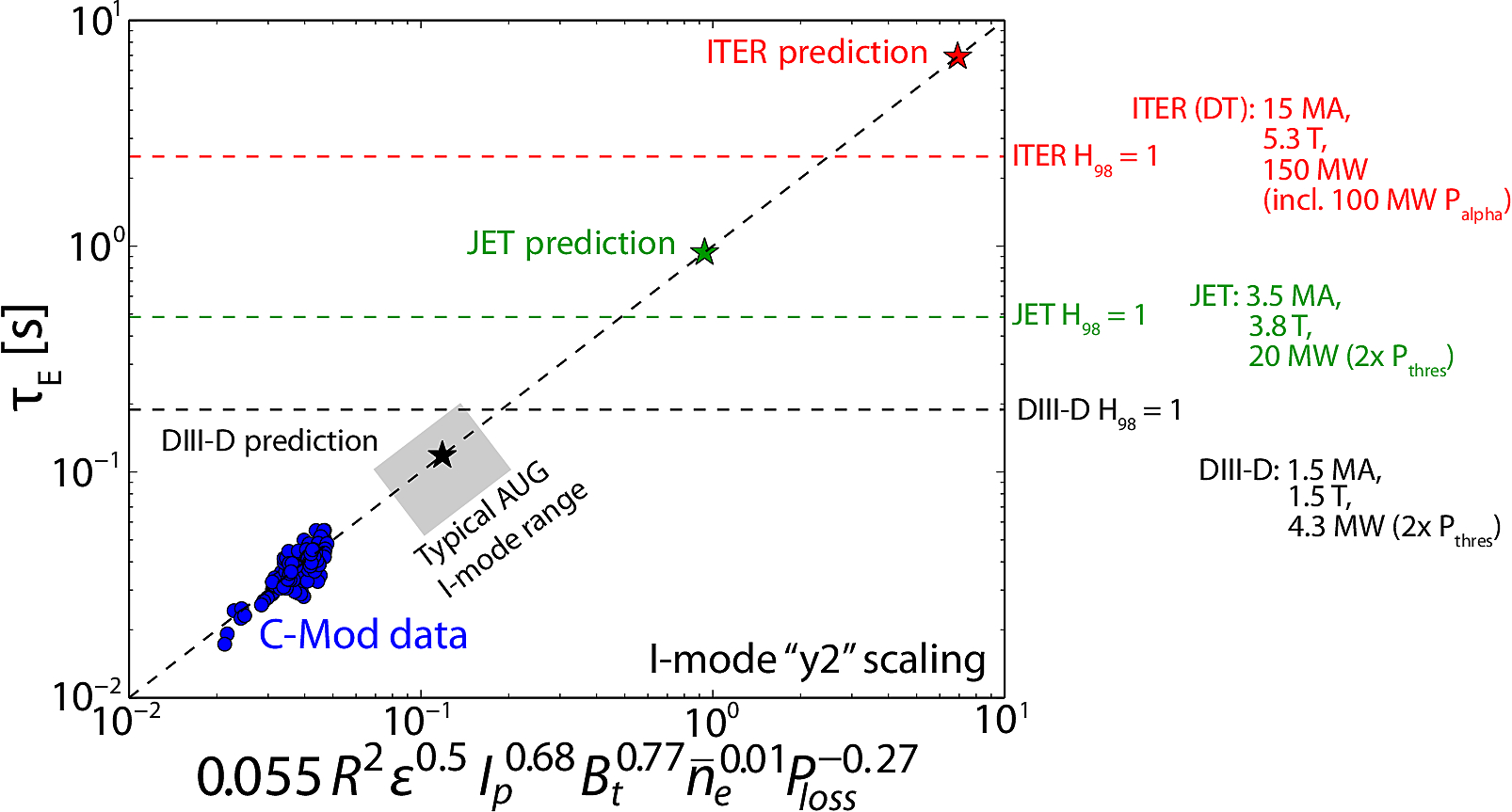John Walk
I-Mode Energy Confinement Modeling (doctoral thesis)
John Walk
The I-mode is a promising new operating regime for tokamak fusion reactor designs. As a component of my thesis research, I developed the first comprehensive study of the pedestal structure in I-mode, using a series of dedicated experiments on MIT’s Alcator C-Mod tokamak. In conjunction with this, my thesis work included an examination of the impact of the pedestal on global energy confinement in I-mode - the understanding of which is essential for extrapolating the regime to reactor-scale tokamaks.
The I-mode’ strong temperature pedestal supports very high core temperatures relative to comparable H-modes, such that at moderate densities the I-mode can attain competitive core pressure (thus fusion power density) despite the relaxed, naturally-stable pedestal.
However, due to the markedly different physics governing the temperature pedestal and energy confinement in I-mode, previously-established empirical trends for energy confinement time in L-mode and H-mode (termed the ITER89 and ITER98 scalings, respectively) must be supplemented with a new scaling for I-mode confinement. These empirical scalings take the form of a power law based on a number of engineering parameters, in the form

for plasma current \(I_p\), applied magnetic field \(B_T\), average density \(\overline{n}_e\), machine major radius and aspect ratio \(R\) and \(\varepsilon\), plasma elongation \(\kappa\), and heating power \(P_{loss}\) (which also accounts for changes in the thermal stored energy in the plasma).
To conduct this analysis of I-mode data, I used a straightforward linear regression analysis of the logarithm of the power law (allowing for a wide range in the fitting parameters to be included), built on a flexible script producing a power-law model for an arbitrary set of input parameters. For a first pass, I began with the included parameters from the ITER98 H-mode scaling. However, the machine size and plasma shaping parameters must immediately be discarded, as the input parameters from a single tokamak experiment vary far too little to produce a meaningful result (the ITER89 and ITER98 scalings were conducted on an extensive multi-machine database - I am currently assembling I-mode data from other devices to extend my own confinement database). Dropping these parameters results in an “irreducible-complexity” power-law fit suitable for single-machine use on C-Mod data, shown below as (b):

The results from this fit are shown below, for the merged databases including older data from both magnetic-geometry configurations(“rev-B” and “for-B”).

These parameter exponents are shown compared to the results from the ITER89 and ITER98 scalings below. The I-mode scaling is notable for its substantially stronger magnetic-field dependence, and much weaker degradation of energy confinement with increased heating power.

This is consistent with observed physics properties in I-mode - the weak degradation of \(\tau_E\) with heating power is indicated by the strong response of the temperature pedestal (which is, fundamentally, representative of a barrier to energy loss). The strong dependence on magnetic field may be tied to the effect of increased field on transition thresholds between L-, I-, and H-mode - increased magnetic field tends to suppress the transition to conventional H-mode (which is ordinarily the upper bound of the operating range in I-mode), thus allowing the operator to push the plasma more aggressively without triggering the H-mode.
The implications of this new scaling for larger tokamaks may be examined by making an estimate of the machine-size dependence in the scaling (which we omitted due to the negligible variation in input parameter values). Initial indications using I-mode data from the ASDEX Upgrade (AUG) tokamak in Germany suggests a size dependence similar to that in the H-mode (ITER98) scaling. Using this estimate, I-mode confinement levels may be extrapolated to other major tokamaks:

The scaling reasonably captures the range of I-mode confinement data from ASDEX Upgrade, while also capturing the comparatively poor confinement initially observed in I-mode experiments on the DIII-D tokamak in San Diego (the \(H_{98} = 1\) line indicates the H-mode confinement prediction for identical input parameters). However, when extended to large, high-power, higher-field devices (JET in the UK, and the ITER tokamak currently under construction in France), the strong field dependence and weak degradation of \(\tau_E\) with heating power dominates the scaling, resulting in predicted energy confinement well in excess of H-mode levels - an exciting result suggesting that I-mode operation could lead to more compact, economical, high-field/high-power tokamak fusion power plants.